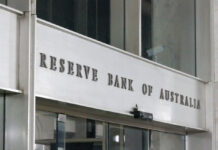The British pound has ticked upwards in the Thursday session. In North American trade, GBP/USD is trading at 1.3977 up 0.15% on the day. On the release front, there are no key British releases on the schedule. In the US, unemployment claims dropped to 226 thousand, just below the estimate of 226 thousand. Manufacturing reports were mixed. The Philly Fed Manufacturing Index dropped to 22.3, missing the forecast of 23.1 points. There was better news from the Empire State Manufacturing Index, which jumped to 22.5, crushing the estimate of 14.9 points. On Friday, the US releases three key construction reports and Preliminary UoM Consumer Sentiment.
It’s an unusually quiet week for British releases, with no key economic indicators. The highlight of the week was the annual budget, which was released on Tuesday. Finance Minister Philip Hammond was likely relieved to deliver the budget in parliament and move on, as the economic forecasts were not particularly upbeat. According to the Office of Budget Responsibility, the country’s economic growth is expected to be weak – 1.5 percent in 2018, and just 1.3 percent in 2019 and 2020. The OECD underscored the bleak picture, when it said on Tuesday that Britain’s economy would grow more slowly than all the Group of 20 members in 2018. The economy has slowed since the Brexit vote in June 2016, taking the British pound down as well. With London and Brussels at odds over the relationship between the sides after Brexit takes effect in March 2019, the pound could face strong headwinds during the year.
The Federal Reserve is widely expected to raise interest rates next week. According to the CME Group, the odds of a quarter-point raise stand at 89 percent. What can we expect from the Fed during the year? The pressing question is how many rate hikes lie ahead in 2018. The current Fed projection remains at three hikes, but the superb nonfarm payrolls report last week has raised speculation that the Fed could accelerate the pace to four hikes, which would be good news for the US dollar. Investors will be keeping a close eye on key US data, especially inflation indicators. If these numbers improve, we’re likely to see four rate hikes in 2018.














